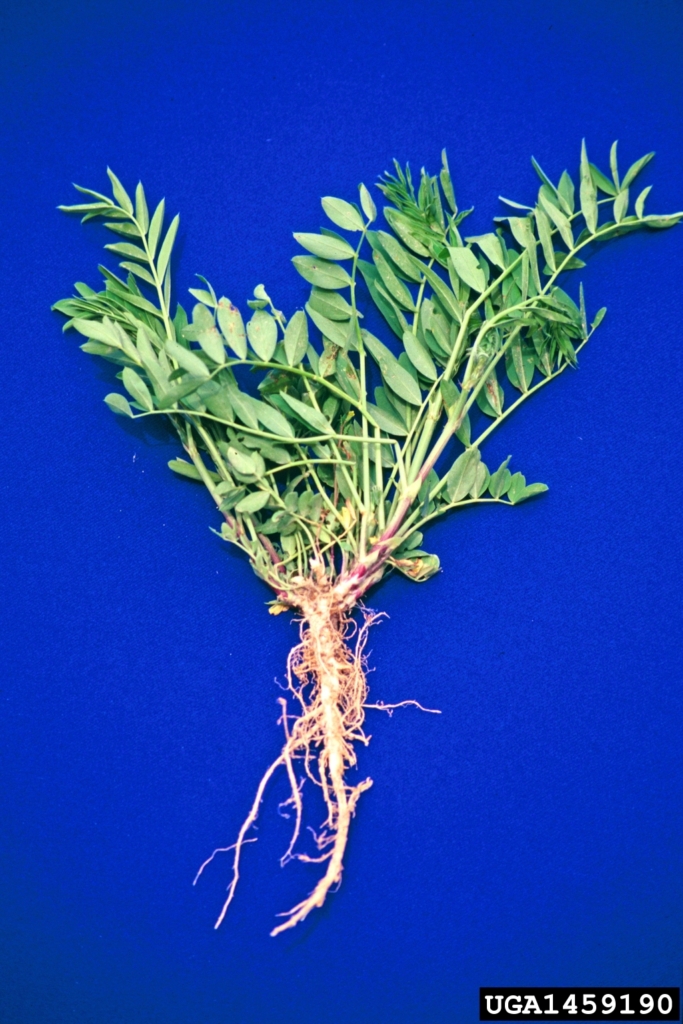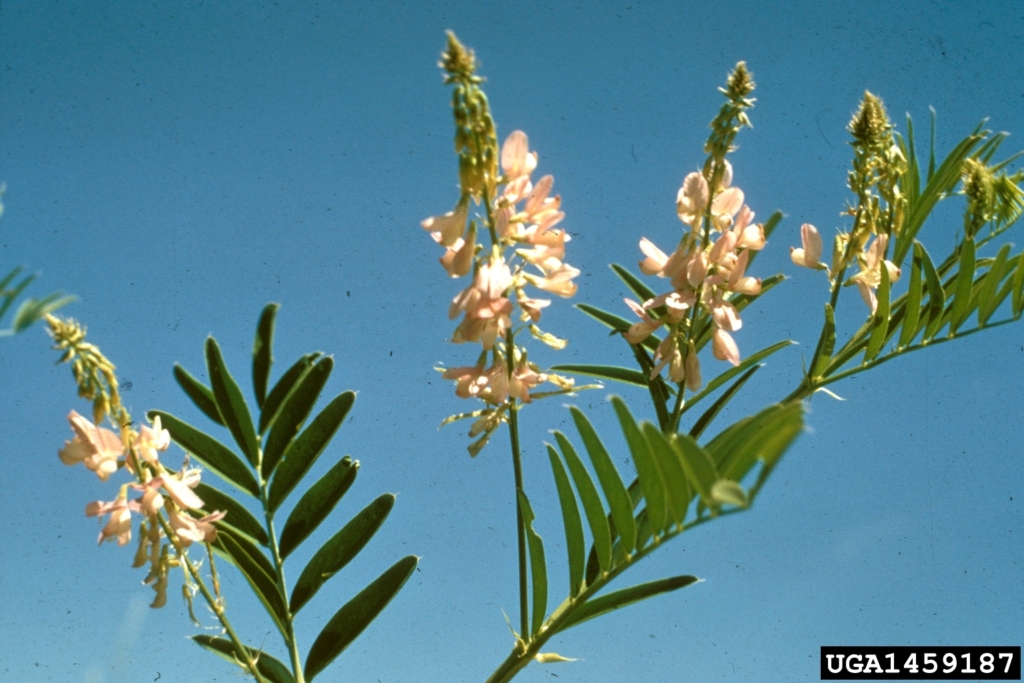Goatsrue
Galega officinalis
Plant Description
Plants may have up to 20 hollow stems reaching 2 to 6 feet tall by late summer. The first seedling leaves are large, oval and dark green while mature leaves are alternate, odd-pinnate with 6 to 10 pairs of leaflets. The plant’s stems and leaves contain a poisonous alkaloid, galegin, which renders the plant unpalatable to most livestock, and lethal in large quantities. The white and bluish to purplish pea-like blossoms are borne in terminal or axial racemes. Each blossom produces a straight, narrow, smooth pod, with 1 to 9 seeds per pod.
Plant Details
| Life Forms | |
|---|---|
| Habitats | |
| ODA Listing | |
| Soil and Moisture Conditions | |
| Suggested Actions | |
| Shade Preference | |
| Mature Height | 2-6' |
| Distribution | In Oregon it has been found near Grants Pass and a roadside infestation in the Portland area. |
| Control | weed control personnel indicate that goatsrue control is very difficult, requiring significant amounts of time and labor |
| Reproduction and Spread | seeds are bean- shaped, dull yellow in color. Seeds drop on the ground when mature and may be spread by water, equipment, or animals. Goatsrue seeds typically remain dormant until scarified and may remain viable for ten years |
| Introduced | It was introduced into Utah in 1891 as a potential foragecrop. Escaping cultivation, it now occupies in excess of 60 square miles inCache, County, Utah. Within this area, goatsrue infests cropland, fence lines,pastures, roadsides, Waterways, and wet, marshy areas |
| Look Alikes | The vetches and wild peas, some of which are native and some of which are weedy, tend to most closely resemble goatsrue.Vetches and wild peas are viney and tend to creep along the ground or over other plants, with white, pink, or purple flowers and tendrils that twist around nearby objects for support. In contrast, goatsrue has flowers that tend towards a pale lavender (though white flowers are known) and lacks tendrils. Both goatsrue and its cousins create peapod structures (being peas, after all), though goatsrue pods tend to look a little rumpled and twisted. |
| Impact | Goatsrue is toxic to all ruminate animals, especially sheep. Livestock and wildlife losses would be expected to increase especially during dry years if animals graze in infested areas. Goatsrue replaces desirable vegetation in pastures and particularly along stream banks and irrigation Canals.Goatsrue is known to form dense patches that start in open, Disturbed sites. These patches typically choke out other plants, dramatically reducing plant diversity. Plants also have deep, tough roots and produce seed that can easily survive up to 25 years or more in the soil. |
| More Info |
© Marion Soil and Water Conservation District. All Rights Reserved.


